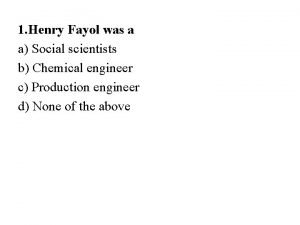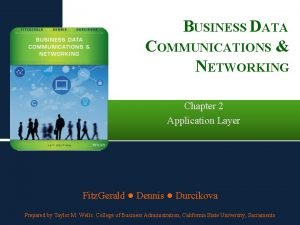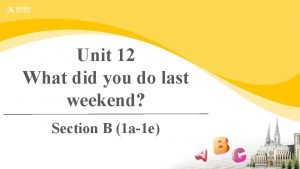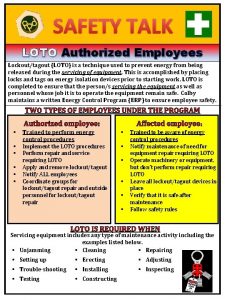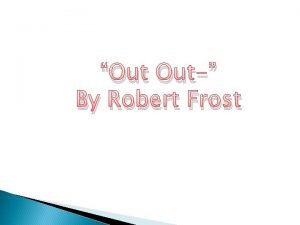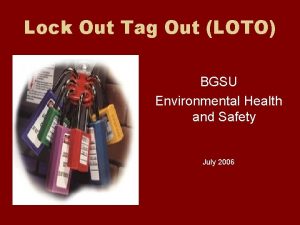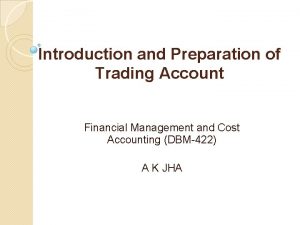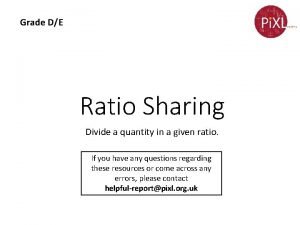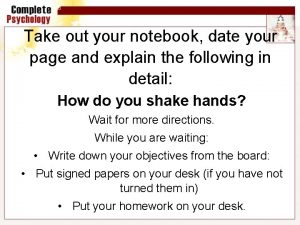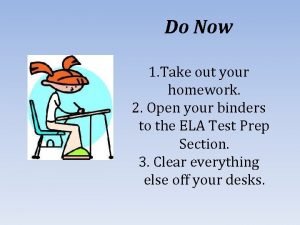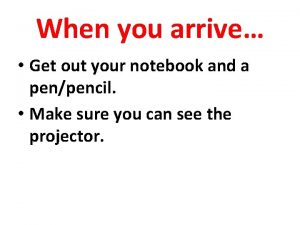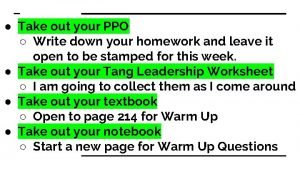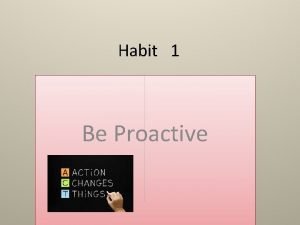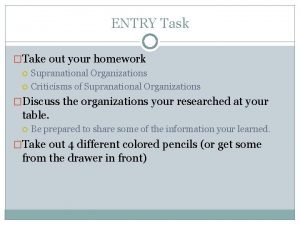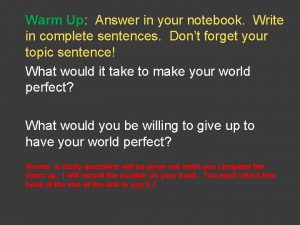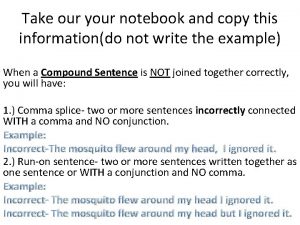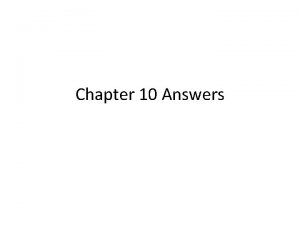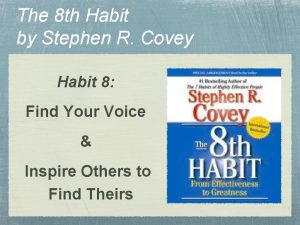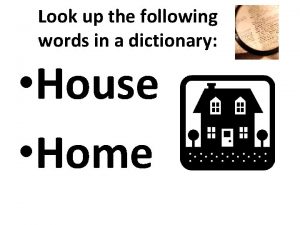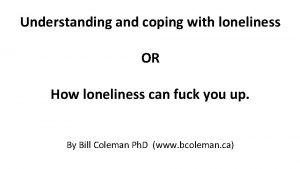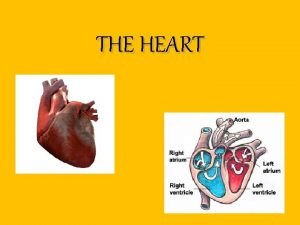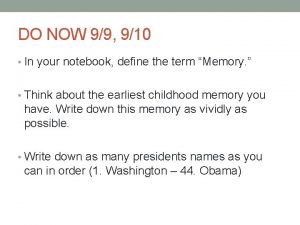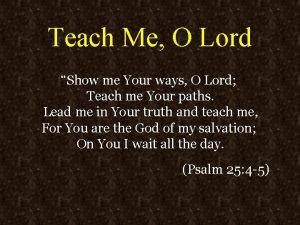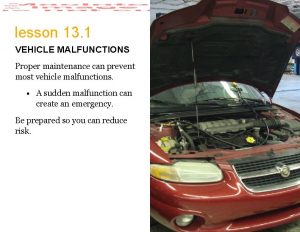How to find out who your client is

















































































- Slides: 81


How to find out who your client is and what he or she needs. • “Just as every lawyer must start “where the client is” in the representation, the lawyer must strive for as specific an understanding as possible of how the child sees her situation in the representation. Otherwise, the lawyer’s attempts to counsel the client, negotiate with the client, negotiate for the client, translate the client’s wishes into legal terms for the court, or otherwise carefully involve the child in the legal proceedings around her, are doomed. ” Professor Jean Koh Peters

OUTLINE – CHILD ENGAGEMENT 1. Understanding the child’s general developmental level. 2. Effects of trauma on child development. 3. Using good general communication skills 4. Interviewing the Child 5. Building Rapport 6. Counseling the Child and involving the Child in Goal Setting

Understanding the child’s general developmental level • Children may not fit “neatly” into a pattern of development- need to know the unique individual • Most children regress when exposed to trauma or stressful situations • Nonetheless– helpful to understand basics of child development to understand how child will process information and communicate • 4 core domains: Social, Emotional, Physical, Cognitive

Infants and Young Children: “Entering the Child’s World” • “Communication” between attorney and young child client may not turn on verbal communication • Important to be familiar with child’s personality (temperament), circumstances, and context • Young children often don’t “tell” but rather “show” their feelings and experiences • Observation and caregiver report are critical

Key Features of Infant/Toddler Social-Emotional Development Birth- 1 year Learns fundamental trust in self, caretakers and environment; Emergence of a primary attachment relationship 1 - to 3 years Mastery of body and rudimentary mastery of the environment (can get others to provide care) 12 -18 months Emerging sense of self– learning to say “no” and the “terrible twos” may begin; Willful, stubborn, tantrums all part of emerging autonomy 18 -36 months Feel pride when they are “good” and embarrassment when they are “bad” May be emotionally attached to toys or objects for security 18 -36 months

Some strategies for work with Infants & Toddlers Visiting and observing is important. While there is more reliance on caregiver report, the attorney will want to make note of: 1. The child’s physical appearance 2. His physical setting 3. How the caretaker interacts with the child 4. How the child responds to the caregiver.

For example: 1. Physical appearance: growth, health, hygiene 2. Physical setting: safe places to explore/play, hazards, availability of food and necessary supplies (diapers, winter jackets) 3. How the caretaker interacts with the child: comforts child, holds child, talks to child, responds positively to interest in or praise regarding the child 4. How the child responds to the caregiver: expresses pleasure, seeks comfort, expresses fear, avoids caregiver

Key Features of Preschooler Development Egocentric, illogical, magic thinking Explosion of vocabulary Poor understanding of time, value, sequence of events Vivid imagination; some difficulty separating fantasy from reality Accurate memory, but more suggestible than older children Primitive drawing, can’t represent self in drawing until about 4 years old Often fail to recognize that others have a different perspective Leave out important facts May misinterpret visual cues of emotions Receptive language better than expressive is typical at least til age 4

Some strategies to use with preschoolers • Keep sentences short (6 to 8 words) • Shorter attention span: Be wiling to keep conversations brief and more frequent • Engage the child in a toy or activity he likes • Have the child draw to explain something. This is done not so much for the end product but the process will help the child tell his story. • Keep aware of facial expressions, to which children are sensitive • Give child undivided attention-children respond to attentiveness Source: The Institute for Human Services for The Ohio Child Welfare Training Program

Key Features of School-Age (5 -7) Development The child may not understand cause and effect The child may not understand link between past and future events Memory is limited Typically won’t grasp hypotheticals May not be able to concentrate on more than one concept at a time When presented with “facts” they assume them to be true Attention is limited Children will often blame themselves for family problems

Some strategies to use with 5 -7 year olds: • Use concrete language • Instead of asking for a conclusion, ask what would make the child feel better about a situation. • Pictures and diagrams can help explain a situation, but stay concrete. e. g. , diagramming multiple hypotheticals can be confusing

Strategies for 5 -7 year olds, cont’d: • Stick to one topic at a time. If the child says something is important to him, focus on that issue • If there are many complicated issues, break the time into smaller visits. • Don’t make “maybe promises. ” – If you say “If I have time, I’ll stop by tomorrow, ” the child hears that as a promise. • Help the child piece together information. They can’t always see how information relates.

Key Features of Middle Childhood (7 -12) Development Importance of the peer group, friendships Desire to “fit in” and share similarities, experiences with peers Hobbies, special interests Competence in activities, skills a big focus May ask more sophisticated questions Increasing cognitive skills, but still some difficulty with abstract concepts and hypotheticals

A Child’s Decision Blue Wagon Pink Bike • Pros: – Carry stuff & friends around – Easier to deliver paper route – Can travel neighborhood – Cool kids have bikes • Cons: – All my friends have bikes – May have to haul siblings around – Hate the color pink – Will have to run errands for Mom

How Children Decide • Recognize gains as well as adults – Can remember friends, popularity, paper route, independence • Do not recognize losses as well – Will overlook hauling siblings, doing errands for Mom, hate color pink • Will not consider probability or frequency, e. g. , how likely there is a paper route to be had or how often will Mom as to do errands

Some strategies to use in middle childhood (7 -12): • Establishing rapport can take time. Show interest in peers, activities of interest (sports, hobbies, school) • Continue to use concrete language, and focus on one topic at a time • Keep things simple, but be prepared for more sophisticated questions • Continued importance of trust and reliability—don’t make ‘maybe promises’

REPHRASING EXERCISE Use language that is: • Simple • Short • Clear • Concrete • Check for understanding • See from the child’s perspective

ADOLESCENTS : CHILDREN 13 -18 “Maturation of the brain, including the regulation of impulses, thinking ahead, planning and weighing risk and reward lead to improvements in self-regulation and can permit the individual to put the brakes on the sensationseeking behavior… But they occur very gradually and are not complete until the mid-twenties. … It’s important for parents to realize that teenagers may not be as good as adults in thinking ahead, envisioning the future consequences of their actions, resisting pressure from others and forgoing immediate rewards to get a bigger payoff. ” Source: Laurence Steinberg, Ph. D. , Professor of Psychology at Temple University, author of “The 10 Basic principles of Good Parenting

Key Features of Adolescent Development Increasing cognitive skill– ability to engage in abstract thought Exploration and experimentation Challenging authority Keen awareness of self in relation to others Thinking their experiences are unique and no one can understand them (the “personal fable” and re-emergence of egocentrism)

Adolescent Decision Foster Home A • Pros: – In familiar neighborhood – Can attend same school – Small room to self • Cons: – Walk to school in very economically stressed neighborhood – No video games Foster Home B • Pros: – More recreational opportunities (e. g. , Boys & Girls Club) – Near home where sibling(s) will be – Access to up-to-date electronics • Cons: – Ride bus to school – Share room with others of different ages

How Adolescents Decide • Still use ranking by pros and cons, but also consider probability and frequency – How likely is it that I will make friends at Boys & Girls Club? – How often will I encounter stressful experiences walking to school? • Do not apply these factors as consistently as adults, so may need support in remembering to consider all variables

Strategies for interacting with teens: • Listen. Teens often feel misunderstood, so be sure to give your full attention and let him/her know you are listening • Acknowledge feelings • Avoid judgment • Don’t impose your opinion. Show the teen how you arrived at your opinion. • Allow teens to arrive at their conclusions. • Be honest. On a conceptual level, they can understand everything you tell them, so there is no need to sugarcoat things. They are very suspicious of adults.

Strategies for interacting with teens (cont’d): • Walk the line: don’t “talk down” but still keep language simple and clear. • Allow plenty of time for questions. Expect to be challenged • Don’t discount peer relationships, which have a big effect on the teen’s world • Avoid an authoritative tone. (Yet don’t try to act like a peer. )

GRIEF AND LOSS

Trauma Defined An overwhelming event or events that render a child helpless or powerless that creates a threat of harm and/or loss coupled with the internalization of that experience that continues to impact perception of self, others, world, and development.

Some signs and symptoms of trauma in children: • • worry about dying at an early age losing interest in activities physical symptoms such as headaches and stomachaches showing more sudden and extreme emotional reactions having problems falling or staying asleep showing irritability or angry outbursts having problems concentrating acting younger than their age (for example, clingy or whiny behavior, thumb sucking) • showing increased alertness to the environment • repeating behavior that reminds them of the trauma

Additionally, children may: • Act out the experience by bullying or humiliating other children • Become vulnerable to re-victimization, especially of concern with teenagers who may put themselves in unsafe sexual situations • Have difficulty trusting and forming relationships • Feel pessimistic about the future and have trouble forming a positive view of their future, including education and career Source: American Academy of Child and Adolescent Psychiatry

Grief and Loss: • Signs and symptoms may parallel many of those associated with trauma • Losses are common experience for children in the system • Possible iatrogenic effects: What we do to be helpful (even if necessary) may also cause harm • Even very young children experience grief and loss • Children may grieve relationships lost even if those relationships were not safe, or were harmful • Adults may minimize or overlook child grief, especially for infants and young children

Consequences of Trauma Across Development: • Neurological • Relational/Maturational – Social-Emotional – Cognitive

Early Trauma and the Developing Brain: • A time of rapid development and transformation – Greatest growth in the first three years—but growth continues – Next major period of growth occurs in adolescence • Experience dependent—>what happens impacts both the growth of cells and the connections made • Stress hormones (“cortisol”) can negatively impact neuronal growth and connection

The “Stress Hormone” Cortisol & The Hypothalamic-Pituitary-Adrenal Axis Neuroendocrine system that responds to stress Cortisol is the final product of the HPA The brain is a target for cortisol & in typical functioning a ‘feedback loop’ to stop production BRAIN CRH Pituitary ACTH Adrenal Cortisol

Children in Foster Care have Atypical Patterns of Cortisol Dozier, Manni, et al. , (2006). Child Maltreatment.

High levels of the stress hormone cortisol is neurotoxic for the developing brain causing Delay of myelination Loss of existing neurons Pruning abnormalities Inhibition of neurogenesis De Bellis, M. D. , 2005

“Figure 1. Abnormal brain development following sensory neglect in early childhood. These images illustrate the negative impact of neglect on the developing brain. In the CT scan on the left is an image from a healthy three year old with an average head size (50 th percentile). The image on the right is from a three year old child suffering from severe sensory-deprivation neglect. This child’s brain is significantly smaller than average (3 rd percentile) and has enlarged ventricles and cortical atrophy. ” From Perry, B. (2002). Childhood Experience and The Expression of Genetic Potential: What Childhood Neglect Tells Us About Nature and Nurture. Brain and Mind, 3, 79 -100.

Chronic Stress and Memory • Children from poor and not-poor families were measured for physiological indicators of chronic stress • Poor children had elevated cumulative chronic stress indicators at 9 and 13 • As young adults, these children exhibited problems with Working Memory that were not seen in not-poor children

Maternal Warmth Lessens Impact of Stress on Working Memory • Males from low income families were measured for physiological indicators of chronic stress at ages 9 and 13 • Maternal responsiveness measured at age 13 • Boys with mothers who were low or medium on responsiveness had lower working memory scores than boys with mothers who were high on responsiveness

In animal models early trauma sets up for lifelong hyperactivity of stress response Adult stress task Brief Stress Results from study by Plotsky et al (2000)

The good news: Prevention and/or intervention can ameliorate risks and lead to better brain and behavior developmental outcomes

Protective Role of Caregiver • Cortisol inhibits brain growth (neurotoxic), and thus needs to be kept low • Infant’s stress response is buffered by a responsive and sensitive caregiver • Interventions with foster parents can positively impact cortisol patterns (Dozier et al, 2006; Fisher et al, 2007)

Parenting Interventions Can Regulate Foster Children’s Cortisol Reactivity Dozier, Peloso et al. (2008). Development & Psychopathology.

Implications: The power of parenting • Data underscore ways that early nurturance can ameliorate early risks and disruptions • Often the focus of attention and intervention is problematic child behavior, but… • The absence of a responsive, highly engaged parent may have the greatest consequences for the child

Parenting a Traumatized Child • Is likely to pose new challenges even for experienced parents • Child “miscues” based on earlier experience – Offer nurturance – Follow child’s need (not just their lead) • Heightened need for active parenting – “Time in” versus “Time out” – Verbal and physical engagement– pick up the baby, talk to the baby

All parents need support… • Biological parents need interventions and support to address problems interfering with their caregiving capacities • Foster parents need support – To understand the needs of traumatized infants and young children, including typical responses to separation and loss – To invest in parenting the child

Consequences of Trauma/Loss in Infancy/Early Childhood • • • Impact on emotions, sense of self, trust in others Insecure/disorganized/disordered attachments Grief, fear, anxiety, withdrawal, hypervigilance Failure to seek comfort or to be comforted Behavioral dysregulation: problems with feeding, crying, sleeping, inattentive, impulsive • Inhibited exploration and play may carry negative consequences for learning • Commonly “miscue” others about their needs and act like they are okay [or push others away]-- when they really need more support, predictability, soothing, and comfort

• Implications for the Attorney Importance of seeing the child, getting to know his or her environment firsthand, taking time to get to know the child, establishing trust, creating a sense of safety. • Importance of supporting/securing a trusting, safe, predictable relational environment. • Support for caregivers (parents or foster parents) as they try to provide this secure, safe, and reliable environment—it’s not always easy to “read through” the child’s miscues. • Making sure others understand the possible miscues – For example, reinterpreting assumptions that this is a ‘bad child, ’ but instead, a ‘scared’ or ‘vulnerable’ child who needs support

Consequences of Trauma/Loss for School-Age Children • • Trauma worldview: “I’m not safe, ” or “I’m helpless” Feelings of low self-worth, sadness, anger Immature perspective taking and hostile attributions Bias towards attending to and perceiving aversive stimuli (assuming an expression is “scary” or “angry” instead of “neutral”) • Engage with distrust or aggressive behaviors. • Expecting negative interactions may lead to “giving up” or “acting badly” • Impacts on working memory and executive function lead to inattention, impulsivity, difficulty with planning

Implications for the Attorney • Predictability & reliability are critical. • Heightened impulsivity, inattention, distraction may require special attention towards clarity, simplicity in explanations, and extra support in thinking through decisions. • Understand common “miscues”– children with trauma histories may “turn away” when they actually need others to ‘step in’ and provide more support • Advocate for services to provide support – at school, with behavior.

Consequences of Trauma/Loss in Adolescence • • • Many of the same implications described for school-age children “I’m not safe” “I’m helpless” worldview Feeling “different” “isolated” “alone” “hopeless” Higher rates of depression/anxiety Difficulties with executive function, impulsivity, inattention, planning, considering consequences can have greater consequences—risk taking behavior • Trauma can affect school performance, relationships

Implications for the Attorney • Feeling ‘helpless’ or ‘hopeless’—most common among trauma survivors with depression—can complicate the task of eliciting the child’s participation in planning or making choices. • Beware the trap of assuming an adolescent is simply a “younger adult”—keep language straightforward. • Prefrontal cortex is still developing– can be hard for child to plan, delay gratification, or regulate impulses. • Heightened impulsivity, inattention, distraction may require extra support in thinking through decisions to be made.

The Role of Treatment: Considerations for Attorneys • If a child shows signs of trauma, be sure the child has been evaluated and is receiving appropriate trauma-informed treatment. • Infants/young children can benefit from “therapy, ” too. – Infant mental health services can support and enhance the relationship between caregiver (parent) and child. • Don’t force the child to talk about painful experiences. • Coordinate interview strategies with the child’s counselor. • Be patient with a child who is being mean to other children. This is often caused by his own maltreatment and needs to be addressed therapeutically.

The Role of Treatment, cont’d • With youth, especially those who may age out of care, take extra time to help them plan for their futures. As they progress in therapy their ability to make decisions will improve, so stay in contact and revisit issues until a clear, positive plan for the future is achieved • Keep promises, show you are trustworthy and return phone calls. Building trust will be especially challenging with children who have been traumatized

INTERVIEWING AND COUNSELING CHILD CLIENTS


INTERVIEWING AND COUNSELING CHILD CLIENTS The goals of meeting with the child are similar to those of meeting with an adult client: 1. To get facts 2. To set the case goals 3. To counsel the client REMEMBER: Entering the child’s world is a process that occurs over time.

Interviewing to Get Facts • Types of information sought: – Subjective v. Objective Facts: • Subjective facts = emotional expressions of needs and wishes; reflect perception, bias and/or opinion • Objective facts = observable, verifiable, definitive representations that exist independent of emotion or perception

Communication with children and youth is a skill that can be improved

Communication Techniques (Source: www. kidscounsel. org) • Attending Behavior (Ivey, 1994) • Attentive Body Language - Show interest through facial expressions and facilitating gestures. – *When interviewing children, minimize your stature to interview at eye-level and maintain a comfortable proximity • Vocal Qualities – Pay attention to your tone and speech rate • Eye Contact – Maintain eye contact unless taking notes – *This may not always generate a comfortable atmosphere for clients and can be quite disrespectful to some clients. • Verbal / Conversational Tracking – Keep conversation on topic – * Go into the interview with a plan for areas to cover but be prepared to be flexible – * If the client has come to you, keep to the topic indicated by the client

Communication Techniques (Source: www. kidscounsel. org) • Directive v. Non-Directive Interviewing – Open-ended, descriptive questions v. closed questions – Leading/suggestive questions • Additional Considerations – Child’s language capacity and developmental competency – Source monitoring (reality v. fantasy) – Child’s memory and concept of time – Your “genuineness” is always being communicated

Building Trust and Rapport with a Child Client • A child needs to trust before opening up. • A child, even an adolescent, won’t immediately or fully grasp the full extent to which cooperating with an attorney will affect them. • The decisions in the case involve the whole child, and will affect his future. • The attorney has to be astute enough to piece together the child’s world and then create the best possible scenario for him. • Trust is the foundation for having the client accept your advice.

Rapport building strategies: • • • • Be explicit about your purpose Take time to have a conversation. Talk about issues other than the case. Involve the child in the decision making process. Explain the attorney-client privilege (if applicable) and the scope of confidentiality. Allow the child to disagree. Allow the child to express negative emotions and opinions and to ask questions. Reassure the child (but be realistic – no false reassurance or raising unrealistic expectations). Affirm the child’s position even if you can’t agree with it. Repeat back what you understand. Be honest. Never promise something you can’t deliver. Use humor, but not sarcasm Follow up. Explain what will happen and then what did happen. Meet regularly and provide contact information. Being available to your client is a big part of trust building. But also keep appropriate boundaries

Initial Client Interview • https: //youtu. be/j. KRk. S 5 eriic • <iframe width="560" height="315" src="https: //www. youtube. com/em bed/j. KRk. S 5 eriic" frameborder="0" allowfullscreen></iframe>

Florida Rules of Professional Conduct Rule 4 -1. 14: Client Under a Disability (a) Maintenance of Normal Relationship. When a client's ability to make adequately considered decisions in connection with the representation is impaired, whether because of minority, mental disability, or for some other reason, the lawyer shall, as far as reasonably possible, maintain a normal client-lawyer relationship with the client. COMMENT: ****… to an increasing extent the law recognizes intermediate degrees of competence. For example, children as young as five or six years of age, and certainly those of ten or twelve, are regarded as having opinions that are entitled to weight in legal proceedings concerning their custody. *****

Creating conditions that promote collaboration and the counseling process • Context • Language • Engaging the client

Creating conditions • Context – Create a quiet, distraction-free, and comfortable environment • Select a meeting place that is familiar to the child – Adopt an interactive style – Keep meeting agendas brief – Set expectations (e. g. , “We only have 10 minutes today …”

Creating conditions • Language – Use Language consistent with the client’s comprehension level. – Keep your messages simple, concise and on point. Use common words and short sentences. – Use proper nouns for names and places rather than pronouns. Use the child’s references. – Use other forms of communication to supplement (e. g. , pro/con list, diagrams, pictures). – Practice active listening. – Use open-ended questions. – Observe the client, including body language. – Use memory anchors (e. g. , “Court will take as long as Sponge Bob. ”). – Avoid jumping from topic to topic. – Be aware of your own responses and expressions.

Creating conditions • Engaging the Client – – – – – Take an unbiased, non-judgmental approach. Be honest and reliable. Allow the child to participate to the extent he can. Ask the child what he would like (instead of inviting legal conclusion) Explain the child’s options and encourage him to actively evaluate those options. Help the child understand his input is important but is not the only deciding factor in the case. Do not promise an outcome you can’t deliver. Explain your reasoning in a way the child can understand. Identify and minimize the child’s anxiety. Validate the child’s feelings and provide reassurance. Avoid over-influencing the child.

Coming to a Goal • Discuss the options available and all the pros and cons. Listen more than you talk. • Explain the likelihood of specific outcomes. Listen. • Set the goals of the case with him. Listen. • Explain how you will achieve those outcomes. Listen. • Prepare the client for court. Listen. • Follow up with an explanation of what happened and what will happen next. • Ask for Questions. Listen.

THEORY OF THE CASE

Definition A logical, persuasive story of “what really happened” that is consistent with the undisputed evidence explains your version of the disputed facts explains what you want to see happen next

Theory of the Case Should be- – Consistent with peoples’ perception of how things works – Presented in the form of a story (“This is a case about. . )

THEORY OF THE CASE Must address – The facts of the case • Undisputed • Disputed – The law – The result you think is best. • Gives force and direction to your advocacy.

EXERCISE 1. What is your tentative theory of the case? 2. Identify the child’s needs, the parent’s needs, what the agency must to do to address these. (I. e. What intermediate goals you have for the case. ) 3. Match each need or intermediate goal identified in #2 to an advocacy corollary.

Possible Theory - 1 “This is a case of a mother who suffered an acute mental health problem but who is capable of caring for her son. The court should assert jurisdiction, place Danny back into his mother’s custody, and put in place a safety plan and a treatment plan to address the family’s needs. ”

Possible Theories - 2 “This is a case about a mother who is unable at this time to provide for her son because of an acute mental health problem. The court should assert jurisdiction, place Danny in foster care, and put in place a treatment plan that will allow the mother to regain custody. ”

Possible Theory - 3 “This is a case of a mother who suffers from chronic mental health problems who is incapable of caring for her son. The court should assert jurisdiction and identify alternative long-term caregivers for Danny. ”

Identifying the Needs of the Child and Family

Theory of the Case / Needs • The theory of the case is the “big picture”— what the case is about and where you want it to go. • The “needs” are the smaller pieces that will help you to get to the ultimate goal – What are the child’s, the parents’ and the family’s needs? – What steps must be completed to move the family toward the ultimate permanency goal

Danny’s Case • What are Danny’s needs? • What are the mother’s needs? • What are the intermediate goals?

The Advocacy Corollary Each need has an advocacy corollary Exercise

Advocacy Corollary Need/Goal Advocacy Corollary • Identify a child’s or parent’s need. Matches need to at least one method of advocacy. • Identify goal Try least adversarial first. Be prepared to use more adversarial methods if necessary to address need or realize goal.
 One direction one thing lyrics
One direction one thing lyrics Harmony not discord
Harmony not discord Thin client vs zero client
Thin client vs zero client Linux leger
Linux leger Example of two tier architecture
Example of two tier architecture So what did you do last saturday
So what did you do last saturday You put your left foot in you put your left foot out
You put your left foot in you put your left foot out Give us your hungry your tired your poor
Give us your hungry your tired your poor Put out the light
Put out the light Robert frost poems
Robert frost poems Out of sight out of mind psychology
Out of sight out of mind psychology Out out allusion
Out out allusion Lock out tag out safety talk
Lock out tag out safety talk Out out by robert frost
Out out by robert frost Lily gulledge
Lily gulledge Matthew 11:28 the message
Matthew 11:28 the message Lock out tag out pictures
Lock out tag out pictures Out, damned spot! out, i say!
Out, damned spot! out, i say! Makna out of sight out of mind
Makna out of sight out of mind Bgsu quality systems
Bgsu quality systems Elements in period 2
Elements in period 2 Find the odd word in each line
Find the odd word in each line Find out the meanings of the following words
Find out the meanings of the following words Un-10un-1+9un-2=0 find out the root
Un-10un-1+9un-2=0 find out the root Find 2 odd miis out
Find 2 odd miis out Animal riddles for kids
Animal riddles for kids Quantitative observation def
Quantitative observation def Identify the odd man out . water,vegetation,plankton,algae
Identify the odd man out . water,vegetation,plankton,algae Trading account is prepared to find out? *
Trading account is prepared to find out? * Hope quotes in the great gatsby
Hope quotes in the great gatsby How to find out ratios
How to find out ratios Find out
Find out Work out your salvation
Work out your salvation Take out your notebook
Take out your notebook Take out your homework
Take out your homework How to figure out your pirate name
How to figure out your pirate name Take out your notebook
Take out your notebook Take out your homework
Take out your homework Take out your homework
Take out your homework Take out your homework
Take out your homework Take out your homework
Take out your homework Take out your notebook
Take out your notebook Write down your homework
Write down your homework Take out your notebook
Take out your notebook Diction in romeo and juliet
Diction in romeo and juliet Go out with your friends
Go out with your friends Correspondence theory of truth
Correspondence theory of truth Clt framework
Clt framework Take a point o on your notebook
Take a point o on your notebook Take out your homework
Take out your homework Take out your homework
Take out your homework Reactive people make choices based on
Reactive people make choices based on Take out your homework
Take out your homework In your notebook write how much it is
In your notebook write how much it is Take out your notebook
Take out your notebook Copy down in your notebook
Copy down in your notebook Take out your homework
Take out your homework Your silver watch band masses out at 326g
Your silver watch band masses out at 326g Whole person paradigm
Whole person paradigm How to find your pirate name
How to find your pirate name Find your graphics card
Find your graphics card Ahoy mateys or maties
Ahoy mateys or maties Rounding with a number line
Rounding with a number line While cleaning your apartment you find a $50 bill
While cleaning your apartment you find a $50 bill Look up the following words in the dictionary
Look up the following words in the dictionary Build your vocabulary find these words in the text
Build your vocabulary find these words in the text Find your college match
Find your college match Aed locator app
Aed locator app Coping with gay loneliness
Coping with gay loneliness Stop blaming your parents for your problems
Stop blaming your parents for your problems Is your heart in the middle of your chest
Is your heart in the middle of your chest Theres too many kids in this tub
Theres too many kids in this tub How to introduce your friend to your teacher
How to introduce your friend to your teacher Wear your heart on your sleeve idiom meaning
Wear your heart on your sleeve idiom meaning In your notebook write about where you live what is it like
In your notebook write about where you live what is it like Your notebook define the following terms in your own words
Your notebook define the following terms in your own words Enagic founder
Enagic founder Your conscious awareness of your own name
Your conscious awareness of your own name Show me your ways o lord
Show me your ways o lord Loss of forward vision
Loss of forward vision Differentiate ideal self from real self
Differentiate ideal self from real self Best topics to write an article for school magazine
Best topics to write an article for school magazine

